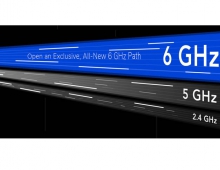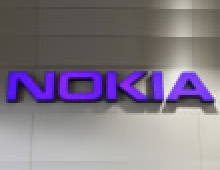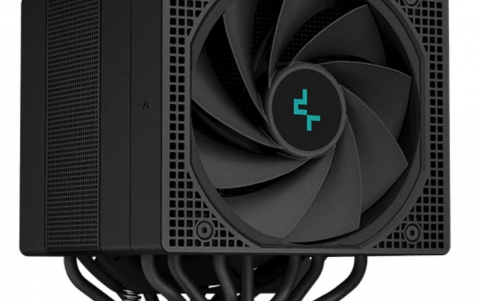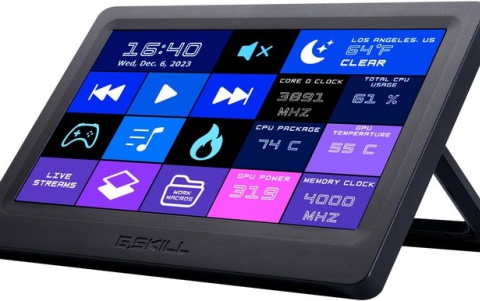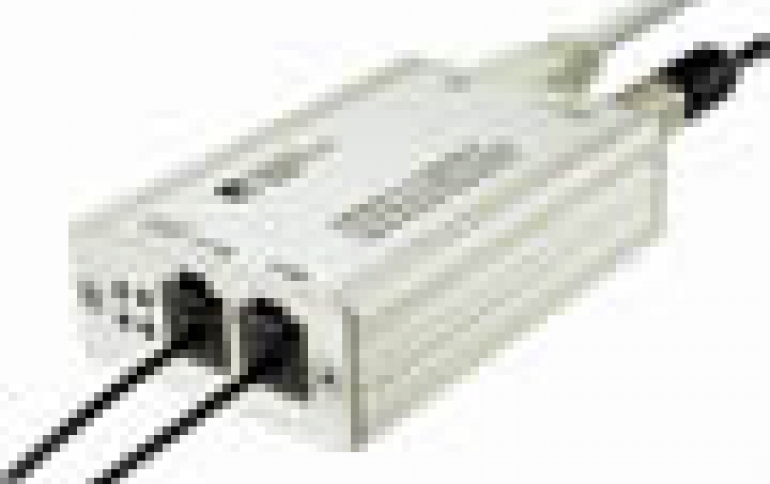
First 100 Gb/s Transmission of Ethernet-over-optical
In two papers presented to the European Conference and Exhibition on Optical Communication (ECOC) in Scotland Wednesday, Lucent Technologies Bell Labs announced the first reported transmissions of 100 Gigabit per second (Gb/s) Ethernet over optical.
"This work is a major first. We have broken through the ceiling in transmission rates and described two techniques that could help implement 100G Ethernet over optical systems," said Martin Zirngibl, director, Bell Labs. "With more and more enterprises moving to 10Gb/s transmission, carriers are looking to implement 100Gb/s Ethernet in the Metro Area Network (MAN) as a way to efficiently multiplex and transmit high amounts of data in its native Ethernet format."
Today, Ethernet signals are transported over 10Gb/s and, occasionally, over 40Gb/s SONET connections. This Bell Labs work is aimed at producing 100Gb/s Ethernet-over-optical transmission.
The Bell Labs research team was able to deliver a 107 Gb/s optical data stream, representing 100 Gb/s of data transmission plus a standard 7 percent overhead for error correction, using the following two technological approaches:
- Duobinary Signaling: This technique uses three electrical signal levels, - positive, negative and zero - to represent a binary signal for communications transmission. Duobinary signals require less bandwidth than traditional NRZ (non-return to zero) signals. The application of this bandwidth-compressing format enabled the creation of an optical 107-Gb/s serial data stream using a commercially available optical modulator (rated for 40 Gb/s).
- Single-Chip Optical Equalizer: Integrated optical equalizers invented by Bell Labs researchers two years ago, can compensate for transmission impairments and also for the limited modulator bandwidth in a commercially available NRZ system. NRZ is the least complex optical data format to generate. In order to demonstrate an optical 107-Gb/s NRZ signal, Bell Labs designed a single chip optical equalizer that compensated for almost all inter-symbol interference arising from modulator bandwidth limitations in an optical 107 Gb/s NRZ electronic time division multiplexing (ETDM) transmitter.
As with the duobinary approach, Bell Labs researchers used a commercially available 40-Gb/s optical modulator in combination with the optical equalizer to generate a 107-Gb/s optical NRZ data stream.
The ECOC-submitted papers on both of these approaches are available upon request by sending an e-mail to pbenedict@lucent.com.
Today, Ethernet signals are transported over 10Gb/s and, occasionally, over 40Gb/s SONET connections. This Bell Labs work is aimed at producing 100Gb/s Ethernet-over-optical transmission.
The Bell Labs research team was able to deliver a 107 Gb/s optical data stream, representing 100 Gb/s of data transmission plus a standard 7 percent overhead for error correction, using the following two technological approaches:
- Duobinary Signaling: This technique uses three electrical signal levels, - positive, negative and zero - to represent a binary signal for communications transmission. Duobinary signals require less bandwidth than traditional NRZ (non-return to zero) signals. The application of this bandwidth-compressing format enabled the creation of an optical 107-Gb/s serial data stream using a commercially available optical modulator (rated for 40 Gb/s).
- Single-Chip Optical Equalizer: Integrated optical equalizers invented by Bell Labs researchers two years ago, can compensate for transmission impairments and also for the limited modulator bandwidth in a commercially available NRZ system. NRZ is the least complex optical data format to generate. In order to demonstrate an optical 107-Gb/s NRZ signal, Bell Labs designed a single chip optical equalizer that compensated for almost all inter-symbol interference arising from modulator bandwidth limitations in an optical 107 Gb/s NRZ electronic time division multiplexing (ETDM) transmitter.
As with the duobinary approach, Bell Labs researchers used a commercially available 40-Gb/s optical modulator in combination with the optical equalizer to generate a 107-Gb/s optical NRZ data stream.
The ECOC-submitted papers on both of these approaches are available upon request by sending an e-mail to pbenedict@lucent.com.

